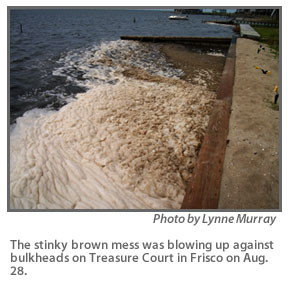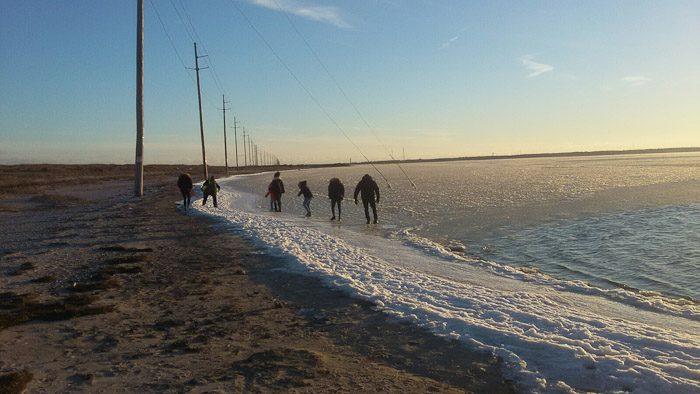The talk the past few weeks has been all about the very foul-smelling, brown stuff floating on the surface of the water on the sound and in creeks and canals.
It really stinks. It collects against bulkheads and floats around on the open water. When the wind blows it against the shore, it gets really nasty looking, brown and foamy ? sometimes blowing through yards.
Folks have been posting about it on Facebook and talking about it wherever neighbors gather.
Most of the complaints seem to be from Avon south through Frisco and maybe to Hatteras Inlet. People have seen it on the open sound, but it has been especially obnoxious along the shoreline and in the canals of various neighborhoods.
These floating,stinking slicks move around as the wind shifts direction, as it has done often in the past few weeks.
Some have reported smelling it as far back as July, but it got really awful last week in Brigands? Bay in Frisco. That is where I live, and I can assure you, it does not smell good.
Some residents said it looked like an oil slick, while others insisted that it was effluent from one or more failed septic tanks.
It was finally reported to the Coast Guard and to Dare County last week.

Jack Flythe, supervisor of Environmental Health for the county, said an inspector came last week to see the brown glob at a dead-end canal at the corner of Brooks and Blackbeard?s courts in Brigands? Bay.
He reported that the mess was not septic-related but was probably rotting vegetative material.
Then an article started circulating from the 2008 issue of Sea Grant?s Coastwatch magazine about a strange substance that started appearing in fishermen?s nets in the sound off Ocracoke in September of that year.
It was described as clear, thin, slimy strands that began to clog pound nets.
It was also described as having a foul odor when it is rotting.
In the article, Joseph Pawlik, a professor of biology in the Marine Sciences Center at the University of North Carolina at Wilmington, identified the stuff as a bryozoan, or ?moss animal? whose scientific name is Zoobotryon verticillatum, which grows in colonies and is sometimes referred to as ?animal grass.?
So could our smelly stuff be rotting animals instead of vegetation?
Yesterday, the Island Free Press sent photos of the disgusting mess to Pawlik.
He replied that bryozoan blooms don?t usually stink or froth, and that they are unpigmented.
?I can’t tell much from your photo,? he said in an e-mail, ?but my guess is that the problem is rotting vegetation, mostly algae and sea grasses. There may also be an algal bloom (microalgae — phytoplankton) which could make the bad smell worse.?
It is apparently also not a public health issue.
?The rotten-egg smell of sulfide from rotting organic material can make some people ill at high levels, but this is probably not a health issue outdoors,? Pawlik said.
Why is this problem so bad this year?
So far, we don?t have an answer to that, but the shallow sound waters have been very warm this summer, which may be a contributing factor.
Yesterday, according to the National Weather Service, the water temperature at the U.S. Coast Guard Station Hatteras Inlet, which is on the sound, was 85 degrees.
It appears that we may have to live with these stinky messes until the cooler fall temperatures.


